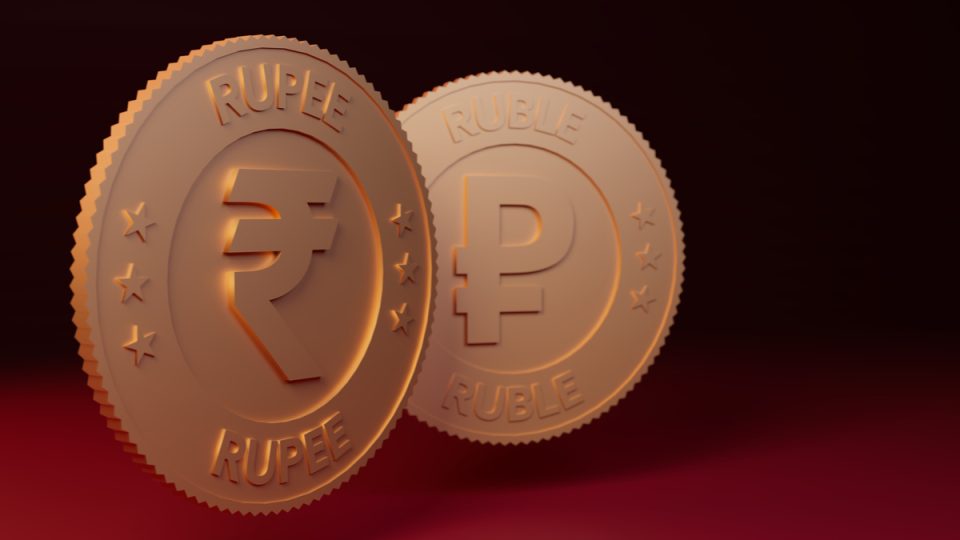As stock prices depend on the demand and supply in the market, similarly, the value of any currency also depends on its demand in the market.
What are Appreciation and Depreciation?
When the demand for any currency increases, then its value also increases. This is called Appreciation. When the demand for any currency decreases, then its value also decreases. This is called depreciation.
If we apply this to the Indian Rupee, we will find that the rupee is depreciating. The purchasing power of the Indian Rupees keeps falling. In fact, it has been depreciating over the last four years. The current rate is 1$= 82.47 Indian Rupees, and as per the predictions and market trend, it might depreciate further. So far this year, the Indian Rupees have depreciated more than 7% against the US dollar. During 2021-22, as the trade deficit widens, the current account balance recorded a deficit of 1.2% of GDP (Source: RBI). India faces a trade deficit (When the import of goods and services is more than the export of the same), due to which the rupee has gradually depreciated.
Let us discuss the reason for the depreciation of the Indian Rupee.
Reason for Depreciation in Indian Rupee:
- Balance Of Trade
When foreign investors or overseas companies invest in India, or when they purchase any goods or services from India, they have to pay in Indian currency, for which they have to first convert their currency into rupees. This increases the demand for rupees, which in turn increases its value. Hence, increasing foreign investment leads to demand for the Indian rupee.
But as we import more than export, when we import something like crude oil and gold from overseas, we have to pay in dollars. The US dollar is the de-facto global currency acceptable for all international trades. In such cases, we convert rupees into dollars to make payments. This leads to an increase in demand for the dollar. Hence its value increases against the Indian Rupees.
- Foreign Investors Withdrawing Money from Indian Market
The US federal bank increased the interest rates amid the Russian-Ukraine war, due to which investors are now shifting towards the US. They find their investment safer and growing as compared to the Indian market. When foreign investors redeem their investments in India, they withdraw their money in Indian currency. But they have to convert their withdrawn money into Dollars, and for this, they purchase dollars in exchange for rupees. As a result, the demand for dollars increases, and the rupee decreases.
- Crude Oil Prices
Due to the Russian-Ukraine war, crude oil prices have spiked significantly. India imports crude oil. It is one of the main buyers in the oil market. Purchasing Crude oil means transacting in the international market and making payments in an international currency: the dollar. This, again, increases the demand for the dollar. Hence, its value increases, and the rupee weakens against the dollar.
- Inflation
The ongoing war between Russia and Ukraine increases the prices of many natural resources India imports. For example, if crude oil price increases, then the prices of machinery, equipment, petrol, diesel, mechanical appliances etc., will also increase. Similarly, India imports tons of gold, so if gold prices increase in the international market, all payments will be made in the dollar. If the rupee weakens, all these prices will increase, causing inflation.
How Does Rupee Depreciation Affect Our Budget?
- Inflation
As discussed above, if payment is made in the dollar while transacting in the international market, this will decrease the purchasing power of the rupee, leading to inflation. Even the cost of travel and study in foreign will increase. If we take the current rate, then to purchase one dollar, we have to spend 82.47 rupees. This will shake our budget.
- Increase In Interest Rates
RBI will increase the repo rate to control the economy’s inflation. This, in turn, will increase the borrowing cost of banks. Now, banks will pass on this burden to their account holders through an increase in the interest rate on loans.
- Investment Portfolio Will Shake
When foreign investors start exiting the Indian market, this will lead to a sharp fall. There will be doubts and depression in the market. In such a case, many of the portfolios will collapse.
How To Deal With Rupee Depreciation?
There are two ways to deal with rupee depreciation:
- Diversification of Portfolio
- International Investment
Companies like IT, Pharma, and FMCG have substantial dealing and earrings in foreign currency. Thus, by investing in the stocks of such companies, profitability can be ensured. Diversification also helps to diversify the risk.Similarly, investing in international funds will give returns in foreign currency, the dollar. Even if the rupees fall, the return and gain on such funds are fixed.





